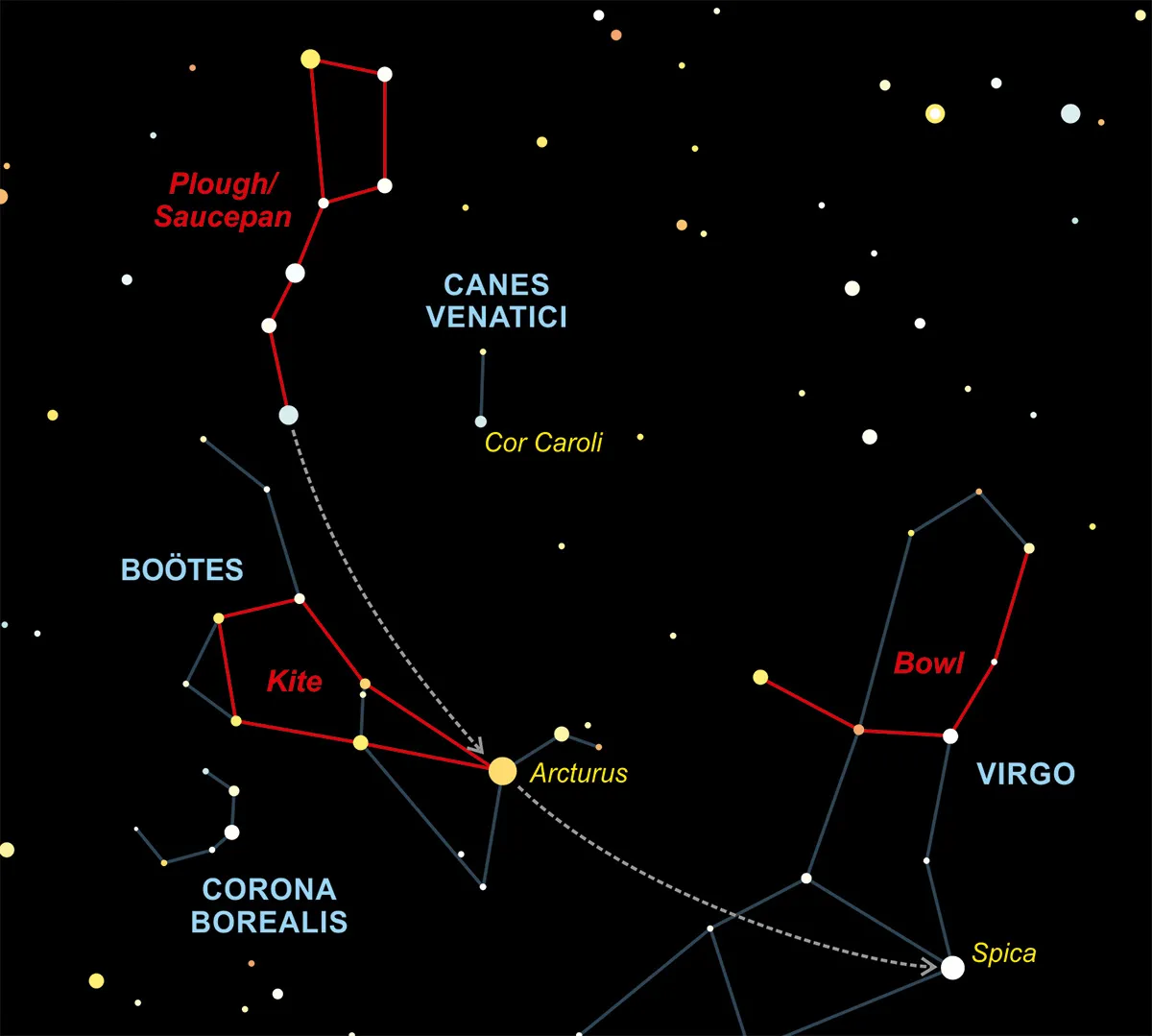Star hopping relies on identifying recognisable shapes formed in the stars and using those as directional guides to your final target.
There’s an excellent example high in the northeast as darkness falls during springtime. The pattern is the Plough or if you prefer, the Saucepan. Formed from seven stars of medium brightness and is probably easier to recognise as a saucepan. As darkness falls, the Saucepan appears to balance precariously on the tip of its handle.
The curved handle approximates a portion of a circle. Imagine where the centre of the circle would be – applying some artistic licence as the star we’re looking for isn’t precisely at the circle’s centre – but is the brightest in the vicinity. The star is Cor Caroli, part of the small constellation of Canes Venatici, the Hunting Dogs.

Return to the Saucepan, extending the handle’s arc away from the pan, for a distance similar to the length of the Saucepan. This brings you to the orange-coloured Arcturus, the brightest star in Boötes, the Herdsman.
The Canes Venatici hunting dogs belong to Boötes, a constellation that resembles a giant kite, with Arcturus at the pointed end. The kite is as tall as the Saucepan is long. If you can identify it, look for the distinctive semi-circle of stars below it, representing Corona Borealis, the Northern Crown.
Keep the Saucepan’s handle arc going through Arcturus to eventually arrive at bright white Spica, the brightest star in Virgo, the Virgin; you may have to wait for Spica to rise to be able to see it.
There’s a catchy saying to remember how to find Arcturus and Spica, which goes:
Follow the arc to Arcturus and speed on to Spica.
Virgo isn’t so easy to identify, but it does have one distinctive large pattern known as the Bowl.
Read more:
- How do I see Lyra the Lyre?
- How can I see the Northern Crown?
- How can I spot Hydra in the night sky?
- Astronomy for beginners: A complete guide for UK stargazing
To submit your questions email us at questions@sciencefocus.com (don't forget to include your name and location)